|
In recent years, the ancient practice of yoga has gained immense popularity worldwide, not only for its physical benefits but also for its profound impact on mental well-being. Beyond its evident physical postures (asanas) and breathing exercises (pranayama), yoga has been increasingly scrutinized through the lens of neuroscience, shedding light on its remarkable effects on the brain and overall health.
The intersection of neuroscience and yoga offers a compelling perspective, unveiling the intricate mechanisms through which this practice influences both body and mind. From altering brain structure to modulating neural pathways, here's a closer look at how yoga transcends the mat to reshape physical and mental health: Rewiring the Brain Scientific studies employing neuroimaging techniques, such as FMRI scans, have unveiled intriguing changes in the brains of regular yoga practitioners. One notable finding is the alteration in gray matter volume, particularly in brain regions associated with stress regulation, emotional processing, and self-awareness. The practice of yoga, which integrates mindfulness and meditation, has been linked to increased gray matter in the hippocampus—an area involved in memory and emotional regulation. Simultaneously, the amygdala, responsible for the stress response, tends to show decreased activity among those who regularly engage in yoga, indicating a reduced reactivity to stressors. Stress Reduction and Mental Well-being Chronic stress can wreak havoc on both physical and mental health. Yoga serves as a potent tool in mitigating stress by influencing the body's stress response system. Through controlled diaphragmatic breathing and mindful movement, yoga activates the parasympathetic nervous system—the body's "rest and digest" mode—counteracting the effects of the sympathetic nervous system, responsible for the "fight or flight" response. This shift creates a state of calmness and relaxation, leading to reduced cortisol levels (the stress hormone) and promoting feelings of tranquility and emotional balance. Consequently, regular yoga practice has shown promise in alleviating symptoms of anxiety, depression, ADD, and PTSD. Enhancing Cognitive Function The fusion of physical postures, breath work, and meditation in yoga contributes to improved cognitive function. Studies indicate that yoga practitioners exhibit enhanced focus, attention, and memory, attributed to the mindfulness aspect of the practice. Mindfulness, cultivated through yoga, encourages present-moment awareness and helps individuals better regulate their thoughts and emotions. This heightened awareness translates into better cognitive flexibility, decision-making, and problem-solving skills. Physical Health Benefits Beyond its impact on mental well-being, yoga offers a myriad of physical health benefits. The combination of stretching, strengthening, and balancing poses enhances flexibility, muscle tone, and joint health. Additionally, yoga's emphasis on diaphragmatic breathing supports respiratory health by improving lung capacity and oxygenation; as well as our overall physiology and ability to move lymph to improve our immune functioning. Moreover, regular yoga practice has been associated with lowered blood pressure, improved cardiovascular function, and better immune system response. These physical enhancements contribute significantly to overall health and vitality. Conclusion This marriage of neuroscience and yoga elucidates the profound influence of this ancient practice on both the brain and the body. Its ability to rewire neural pathways, alleviate stress, boost mental health, and enhance physical well-being underscores its efficacy as a holistic approach to health and wellness. By incorporating yoga into our life and lifestyle, we not only strengthen our bodies but also cultivate mental resilience and inner peace. As science continues to reveal the intricate connections between yoga and neuroscience, the transformative power of this practice on our holistic health becomes increasingly apparent, offering a path towards a balanced and thriving life.
0 Comments
 Gratitude is a beautiful energy that embodies presence and wakefulness--allowing us to fully engage with life. It is a unifying and balancing force that helps us navigate life's challenges; enhancing feelings of connection, resilience, community and well-being. 🧡 Gratitude is a powerful and transformative emotion. It can shift our perspective and help us navigate life with more positivity and resilience. When we cultivate a mindset of gratitude, we become more present and awake to the beauty and abundance in our lives, even in challenging moments. Here are a few aspects of gratitude and its benefits:
HAPPY THANKSGIVING Samhain is a Gaelic festival celebrated from sundown on October 31st to sundown on November 1st. It marks the end of the harvest and the beginning of the "darker half" or Celtic New Year.
This transition signifies the cycle of life, death, and rebirth, which was central to Celtic beliefs. All of nature seems to return to the earth, making space for higher consciousness to occur. The Veil between the physical world and the spiritual (or "other") world is considered to be at its thinnest during this time, allowing spirits to easily cross between realms and enter our world. The ancient Celts would traditionally make offerings of food, drink, and prayers to honor ancestors and appease the spirits of the other realms. This was done to seek their protection and blessings for the coming year and to benefit their harvest and livestock for the following season. Ideas to cultivate in your yoga practice
 Fall is a beautiful season to practice yoga. Our senses are filled with the beauty of the changing light, colors, temperature and smells. We are immersed in the rhythms of nature. By focusing on transitions in our yoga practice we can learn to flow gracefully through life’s seasons and transitions. We use our breath to anchor awareness in the moment, to guide our movements from one pose to the next, and even to increase or decrease our energy. Here's a sequence that emphasizes smooth transitions and aligns with the energy of autumn: 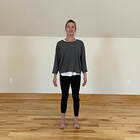 Centering (Tadasana - Mountain Pose): Begin by standing tall at the top of your mat. Take a few diaphragmatic breaths to center yourself, feeling grounded and stable through the 4 corners of each foot. 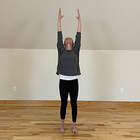 Sun Salutations: Start with a few rounds of Sun Salutations (Surya Namaskar) to warm up your body and establish a rhythm and flow. Pay attention to the transitions between each pose, moving with your breath. As we build heat and strength we allow the inhalations to be expansive and the exhalations to be soft and clearing 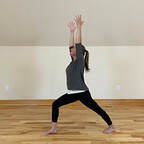 Warrior Flow: Move into a Warrior flow by transitioning from Warrior I to Warrior II to Warrior III. These poses help you connect with your inner strength and balance. Repeat on both sides, focusing on the smooth transitions. 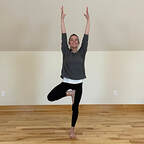 Tree Pose (Vrikshasana): Find your balance by practicing Tree Pose. Focus on the shift of weight and the smooth transition from a standing position to balancing on one leg. This pose embodies the essence of fall, as trees shed their leaves. 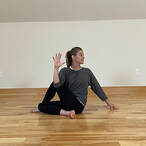 Twists: Incorporate seated and standing twists into your practice. Poses like Revolved Triangle (Parivrtta Trikonasana) and Seated Spinal Twist (Ardha Matsyendrasana) encourage flexibility and help with transitions between different postures. 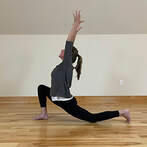 Flowing Lunges: Move through a sequence of lunges, such as Crescent Lunge (Anjaneyasana), High Lunge, and Low Lunge. Pay attention to the transitions between these poses, maintaining smooth and controlled breath-directed movements. 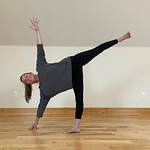 Balancing Poses: Continue with balancing poses like Half Moon (Ardha Chandrasana) and Extended Hand-to-Big-Toe Pose (Utthita Hasta Padangusthasana). These poses challenge your stability and encourage graceful transitions. 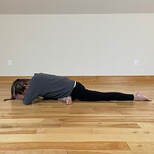 Cool Down: We begin to soften the inhalations and lengthen the exhalations in a 1:2 breath ratio. Wind down the practice with forward bends like Seated Forward Bend (Paschimottanasana) and Pigeon Pose (Eka Pada Rajakapotasana). Focus on the transition from an active practice to a more relaxed and introspective state. 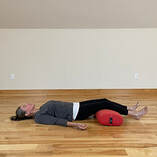 Savasana: Finish the practice with a deeply relaxing Savasana (Corpse Pose) to integrate and assimilate the benefits of your practice. Allow breath and awareness to move freely through the entire body. Throughout your fall yoga practice, pay attention to your breath, and let it guide your transitions. Transitioning mindfully not only helps you move gracefully, but also deepens your connection to the present moment. Embrace the changing energy of fall and the beauty of transitions in your yoga practice.
“The separateness is in our own minds. Once the veil of illusion and separateness is lifted, we realize the oneness in everything” ~Buddha 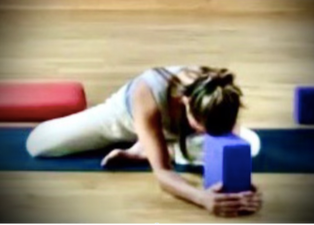 The Healing Power of Yoga Therapy: A Holistic Approach to Health and Wellness In our fast-paced modern world, stress, anxiety, and various health issues have become prevalent, leaving many searching for effective and holistic approaches to healing and well-being. Yoga therapy has emerged as a promising avenue, offering a unique blend of ancient wisdom and modern science to address physical, mental, and emotional imbalances. In this blog post, we will explore the transformative potential of yoga therapy and how it can guide individuals towards a healthier, more balanced life. Yoga therapy is a whole-being approach to health management. Unlike conventional medicine, which often focuses on treating symptoms through prescribing medication, yoga therapy aims to uncover the root causes of ailments and offers healing through multiple yogic principles and practices. Rooted in the ancient wisdom of yoga, this form of therapy views the individual as a holistic being comprising mind, body, and spirit, and seeks to address imbalances in all these aspects. A qualified yoga therapist plays a vital role in this process. Through careful assessment, the therapist tailors specific practices and techniques to meet the unique needs of each individual. These practices may include asanas (physical postures), pranayama (breathwork), meditation, mantra chanting, and relaxation techniques. The therapist guides and supports the individual throughout their journey, promoting self-awareness and empowering them to take charge of their own healing process. Benefits of Yoga Therapy
Yoga therapy offers a powerful and transformative approach to healing and well-being, catering to the needs of each individual in a holistic manner. Its integration of ancient yogic wisdom with modern scientific understanding sets it apart as a unique therapeutic practice. Whether you are seeking relief from physical ailments, mental stress, or emotional challenges, yoga therapy provides a path to self-discovery, self-empowerment, and ultimately, a healthier and more balanced life. If you haven't explored this beautiful world of healing yet, it's time to embark on a journey of self-care and embrace the profound benefits of yoga therapy. Call for more information (802)658-9642 Often in our practice we tend to focus on the larger muscle groups. They are easier to feel and control, and at first they may even provide more satisfaction. Our feet are often forgotten, we enclose them in shoes for hours every day to be ignored until they are in pain or discomfort. Our mindful awareness of our feet and ankles helps us establish a strong kinetic chain, enabling efficient transfer of energy and engagement throughout the lower body . 1. Grounding through the 4 corners of the feet: The four corners of each foot are the ball mound of the big toe, ball mound of the little toe, inner heel, and outer heel. The feet are our foundation when standing and moving. They are responsible for supporting our entire body weight, maintaining balance, and facilitating movement. By consciously engaging through the 4 corners we can activate different muscles and structures, including the glutes and core. 2. Awakening the Glutes: The gluteus maximus, medius, and minimus, are a powerful group responsible for hip mobility and stability. By consciously engaging the feet, we can awaken and integrate the glutes more effectively. In standing poses (or with feet in the air or up the wall ) focus on pouring steady weight- through each of the 4 corners one at a time. Observe the subtle shifts up each leg- into the glutes, hips and lower core. 3. BKS Iyengar: Ankle Stability and Quieting the Mind: BKS Iyengar emphasized the importance of steady, rooted feet and ankles as a means to anchor the mind. The ankles provide a sense of stability and foundation for the entire body. When our ankles are firm and aligned it creates a ripple effect of stability that spirals upward into the root of the pelvis, the spine and upwards calming the mind. 4. Patanjali's Yoga Sutra 1.2: Yogas Citta Vrtti Nirodhah: Yogas Citta Vrtti Nirodhah translates as Yoga is the cessation of the thought waves of the mind. The mental fluctuations or "chitta vrittis" can lead to stress, anxiety and a sense of disconnection. Through our practice, when we cultivate mindful awareness in our feet and ankles, we not only establish a stronger more integrated connection to our glutes and core, we learn to move our mind toward state of tranquility. We realize our true Self beyond the noise and limitations of the mind, aligned with our true essence. Yoga Teacher Training offers an exploration into the Self and an opportunity for a re-design. It is for curious practitioners and aspiring teachers to deepen their practice, knowledge, and experience of all aspects of Yoga.
We will explore the body as a beautiful system of light and energy, and learn how mind, body and breath guide our practice. We will learn to quite the fluctuations of the mind, go beyond asana as just physical exercise, and surrender to the majesty of the unknown. Dive into the deeper aspects of Hatha yoga including philosophy, history, anatomy, chakras, nadis, bandhas, mantra, pranayama, and mudra. Our guest teachers will lead us through an understanding of Ayurveda, Vedic Astrology, and the Yoga Sutras of Patanjali. Through self study and practice we attune to our own essential nature, and from that place we develop an authentic and unique relationship with the Self and all of life. When you change the way you look at things, the things you look at change ~Max Planck 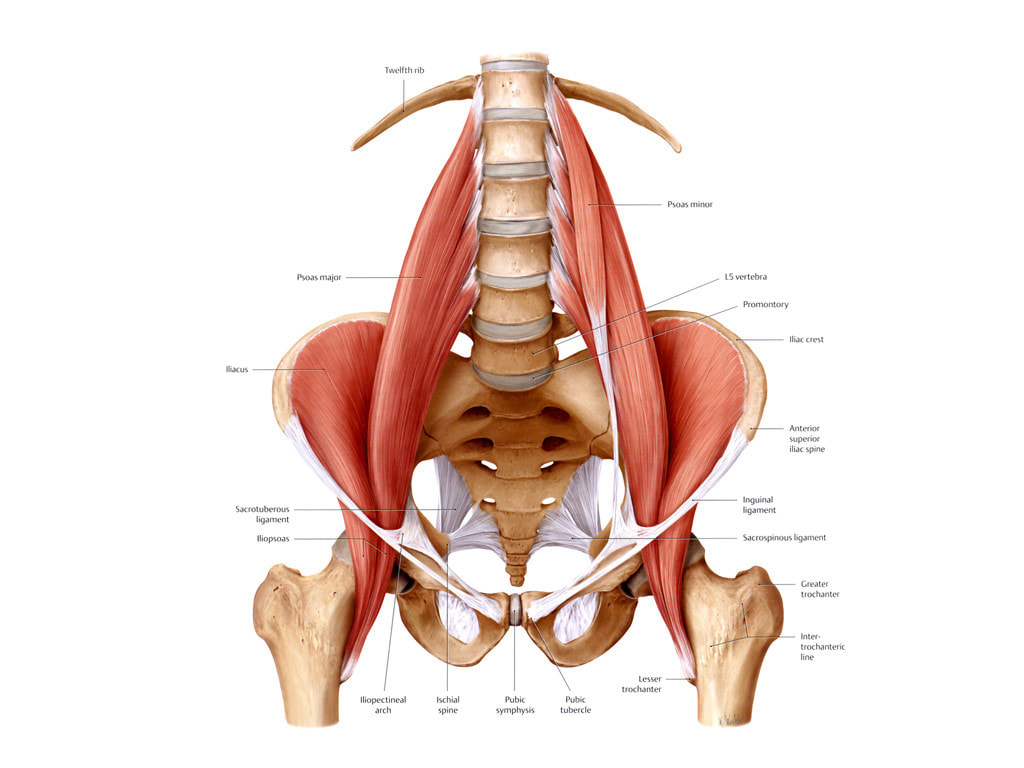 The IBS/SIBO-Psoas Connection and Why It’s Important for Highly Sensitive People Note to the reader – this is one motherload of an article. Grab some coffee and a low-fodmap cookie and let’s dive in. In my personal experience with SIBO (small intestine bacterial overgrowth), back and hip injury, and with my experience working with highly sensitive people (HSP) with similar issues, a pattern has emerged that feels much too important not to talk about. So far, I haven’t really seen anyone having this conversation (not to say that it isn’t happening, I just haven’t come across it yet) so here I go, in hopes of starting one. My lens as both an Ayurvedic health counselor and an energy medicine practitioner is one of seeing the body holistically, of noticing how different parts of the physical body interact, how different parts of the subtle body interact, and how the physical and subtle bodies interact. When working with digestive issues like IBS and SIBO, taking a big picture look at how the systems of the body interact is important. Through my lens as a highly sensitive person I have come to see the nervous system and subtle body as the center of the highly sensitive world – the central point which governs everything and through which all issues or discomforts must be addressed. Other HSP experts have noticed common physical issues that HSP’s, as a group, tend to share. These include things like connective tissue disorders, scoliosis and other spinal issues, pelvic issues (bowel, bladder, menstrual, low back), digestive issues (IBS, SIBO, food sensitivities, leaky gut), and gut flora imbalances. Because the nervous system is the main focus with high sensitivity, we must start here when seeing how these issues may be linked for the HSP. The nervous system is incredibly complex and literally connects everything in the body together through a system of communication. It is also through the nervous system that us HSP’s take in sensory information and process it. Deeply. This very strong microphone of a nervous system, which connects to everything in the body, must be considered a central anchor in regards to physical and subtle issues in the HSP body. If we think of the nervous system as the network of information that connects the body together, similar to our global information system, then we can start to see how the infrastructure through which the nervous system operates is important for the function of the whole system. Having a blocked infrastructure can cause problems with communication. Conversely, too much communication in the system (additional stress in the nervous system, for example) can short-circuit the infrastructure (kind of like running too much power through an energy circuit – you can flip a breaker). Consider using this metaphor as we look at the ways in which our muscle, connective tissue and digestive distresses are linked and how this can be a bigger problem for HSP’s. In my Sensitive Self Intelligence course (soon being renamed as Flight School), we cover a lot of these connections. Here, I’ll mostly just be talking about the connections between IBS/SIBO and the Psoas. Getting to Know the Psoas/Illiopsoas Complex Two muscles, the psoas major and the illacus, together make up what is known as the illiopsoas complex or simply, the psoas. This muscle group is one of the most important in the entire body, and especially so for the HSP body. Because of its location, it is one of the major muscles that allows us to stand upright, connecting our spine to our legs from the front. The psoas begins at the long head of the femur (thigh) bone and wraps up over the front of the pelvis. The illiacus then attaches to the inside of the pelvis, while the psoas major draws back and connects to the sides of our lumbar vertebrae. Functionally, this is the muscle that pulls our knees towards our chest. It is also one of the main core muscles involved in body’s “fight, flight or fetal” response. (*Note – this response is called the “Red Light Reflex” in the study of Somatics. I highly recommend reading Somatics by Tommas Hannah for more information). Our body has a physical response to stress that prepares the body to fight, flee or go fetal – curl into the fetal position. The psoas is the muscle responsible for all three – readying our body in a fighting stance, driving our body forward in a run, or curling us into a tight ball. Additionally, large nerve bundles (transmission lines) that supply the digestive system with nerve impulses (communication/information) must pass through the psoas muscle, giving it an even more important job – messenger muscle, or, referring to our metaphor – an environment through which our transmission lines run. Liz Koch, an expert in pelvic wellness, says: Although the psoas has been thought to serve the spine as a guide wire creating stabilization, its main job is to message subtle changes in weight, location, and safety. The psoas bridges the belly enteric brain, central, and autonomic nervous systems. The large nerve ganglion located within the belly core going to the digestive and reproductive organs passes over, embeds into, and through the psoas. Serving as messenger of the core our psoas translates and transmits all expressions of safety, harmony, and integrity; signaling whether or not we are centered and congruent or encumbered and vulnerable.i When the psoas muscle is constantly charged with feelings of fear, or it’s holding a past trauma, it may become chronically short, tight and dry. It can also react this way when there is dysfunction in the pelvis – the psoas will react to take up any slack in pelvic stability. So if the pelvis is weak from inactivity, singular repetitive movements or trauma, the psoas will step in and do the job of stabilization, while continuing its more primitive and important work as messenger. Many HSP’s suffer from low back pain, scoliosis and other spinal problems. While there is no major research on the link between HSP back pain and the psoas, I see more HSP clients with psoas issues than any other sub group of yoga students. Stress affects the psoas, shortening it and pulling the body forward. The psoas provides the basket in which the digestive organs sit.vIf you think of the psoas as the bowl in which our softest most primal organs sit, you can see that it forms a sort of foundational layer within our body. This foundation, related in energy medicine to our first, second and third chakras, are often the areas that HSP’s struggle with most – issues with survival and money, trouble in identifying like-minded tribe or family, in relating with others and in self empowerment. Physically, a tight psoas can affect how well we digest food, the comfort of our menstrual cycle and how well we eliminate and remove waste from the body. When looking at issues in the gut, including IBS/SIBO, I think the psoas may be a big contributor. Liking this article? You can subscribe to more like it right here. A bit about Connective Tissue HSP’s tend to have more connective tissue disorders, or problems with the fascia, than hardy people. Fascia is a type of connective tissue that acts like a spiderweb or network in the body. Fascia surrounds all of our organs and covers all of our muscles, effectively connecting our innards together in a web-like sheath, kind of like plastic wrap. But different from plastic wrap is the way that fascia acts like a network of information, relaying nerve impulses and reacting to stress and tension in the body. When flexible, our fascia is healthy and unrestricted. When unhealthy, the fascia becomes restricted and sticky. Mainstream medicine still considers fascia a relative mystery, and largely ignores it in treatments for physical pain. What is known, but not really understood, is that within the body, fascia has a slippery quality, holding the organs but allowing them to glide over one another – allowing what visceral manipulation practitioners call “mobility” of organs. When fascia is unhealthy, largely due to inflammation or injury, it becomes sticky and can form adhesions – areas of drier tissue, causing tension that you can imagine by stretching plastic wrap tight around an object, then pinching it on one side – it stretches and gets tighter in some areas to account for the pinch. Many sources cause the inflammation that leads to adhesions, the most obvious being direct injury or trauma. Other factors include infection, repetitive movement, poor diet, toxins, poor posture and emotional stress. Because fascia provides the atmosphere through which nerve interactions happen, it responds to stress and tension. Additionally, during an injury, it’s common for fascia to constrict around the injury in order to provide structured protection, tightening the whole fascial system and potentially causing pain and discomfort in an area of the body not associated with the injury. For HSP’s with digestive and/or other pelvic imbalances, considering inflammation or stress-induced adhesions may be an important factor for treatment and relief. As we’ll see as we look at IBS and SIBO specifically, the small intestine is really long and loops its way through the abdomen, connected to our insides through several connection points. There are many opportunities for small adhesions to bind up the small intestine and inhibit motility and mobility. For example, the right sacro-illiac joint is the attachment point for the end of the small intestine. When the sacrum is out of place, the end of the small intestine can’t empty properly into the colon – and this works both ways. Disruptions in the psoas can cause inflammation, leading to small internal adhesions anywhere in the gut, and likely in some of the meters of small intestine. This sticky connective tissue can pull on the side of the sacro-illiac joint, internally causing rotation. The Digestive System-Nervous System Connection Remember that we are using the nervous system as an anchor or lens through which to link the psoas and digestive disturbances. I believe that a huge part of the reason HSP’s experience increased digestive discomfort (like IBS) is because of how the nervous system and gut communicate and because of the environment through which the transmission wires reach the digestive system. As stated earlier, the nervous system rules the roost; it plays a huge role in several digestive system processes. Some of the control the nervous system has over digestion comes from links between the digestive system and the central nervous system (CNS), however, the digestive system also has its own, local nervous system. This is called the enteric or intrinsic nervous system. We are only beginning to understand the complexity and magnitude of this immense nervous system – but we do know that it contains as many neurons as the spinal chord.ii The enteric nervous system is part of the autonomic nervous system, along with the sympathetic and parasympathetic nervous systems. The enteric nervous system has two main networks of neurons (transmissions) embedded into the wall of the digestive tract from esophagus to anus. These exert control over the motility of the digestive tract (how well each organ moves of its own accord – primarily the act of pushing food and digestive juices through it) and in sensing the system environment in order to regulate blood flow and control cell function. Within these plexuses are several types of neurons (communication centers) which receive sensory information from the mucosa and the muscle and respond both to the internal, chemical stimuli like digestive fluids and muscular stimuli like stress and tension. Other neurons respond to the motility and secretion of the digestive organs, and others integrate this information. The enteric nervous system functions autonomously (without us thinking about it), but requires communication between this system and the CNS through sympathetic and parasympathetic fibers connecting the two (transmission wires). Through these links, the two systems can speak to each other. For example, when we see appealing food (sight is a sensory information coming in through the CNS), it signals the stomach to start secretions. Generally, sympathetic stimulation (usually a stress response, indicating activity) inhibits gastrointestinal secretions and causes the digestive tract to constrict or close down. Parasympathetic stimuli (our “rest and digest” system) stimulates digestive activities. Stress and Digestion What this tells us is that when we are chronically stressed, we don’t digest food as well. Additionally, because us HSP’s continuously take in sensory information, when we eat, we aren’t just digesting the food – we are digesting the entire atmosphere of the room, including conversation, emotions and the look and feel of our location. Eating in a stress-free environment is SO important for proper digestion and absorption of food, especially for HSP’s. The first and easiest thing can do to reduce gut disturbances is to learn how to manage stress and eat undistracted in a calm atmosphere. When we experience chronic stress to the point that our fight, flight or fetal response is triggered, even at a low level, for long periods of time, the psoas muscle become short, dry and tight. Remember that the psoas is like the basket for our digestive organs and provides the atmosphere or environment through which our nerve transmissions run from our CNS to our enteric nervous system. If our psoas is short and tight, it signals to the CNS that we are somehow not safe, secure or calm. This information will be relayed to the enteric nervous system and be present as we eat. If we are continuously stressed or otherwise not managing our gift of high sensitivity well, our gut may be consistently receiving messages to shut the system down (so that we can run or fight or fetal). IBS was once thought to be a diagnosis for gut disturbances that didn’t have any other cause. When flexible fiberoptic cameras became the rage in the endoscopy world, the whole practice shifted to focus on diseases that you could see with the naked eye. Patients whose problems couldn’t be identified via scope were often thought of as difficult because answers took effort and solutions were less lucrative; they were often diagnosed with IBS. Due to new research primarily being conducted by Dr. Mark Pimentel at the Cedars-Sinai Medical Center, we are now developing a new understanding of the causes of IBS. Even though I just got done talking about digestion and stress, I want to clarify that I don’t believe that stress is the cause of IBS – in fact, it’s been proven not to be. However, especially for HSP’s, management of both the psoas muscle and stress-induced inflammation in connective tissue are a piece of the puzzle that remain important for healing and management, especially for those IBS sufferers who also deal with low back/hip/pelvis issues. IBS is now thought to primarily be caused by bacterial overgrowth. The theory goes something like this: At some point, an otherwise healthy person gets food poisoning. Due to factors that are not yet understood (possibly genetics), the body does a poor job of completely eradicating the offending bacteria. This bacteria sticks around and its first order of business is to disrupt the cycle the regular cleansing waves of the digestive system. The digestive system must cleanse itself through peristalsis in order to move food through the system and repair. After these waves are disrupted (resulting in either too many or not enough), not only does food back up in the system but also the bacteria, colonizing in areas where few bacteria should live – namely, the small intestine (bacteria should primarily be found in the large intestine). Once bacteria have moved into the small intestine, they act as little thieves, stealing nutrients meant for the host and feeding on highly fermentable foods. Their by-product is methane. This whole process results in either too much or too little movement in the gut (diarrhea or constipation, or a combination of both) and severe bloating. When people are diagnosed with SIBO, attention is usually put on the overgrowth of bacteria. While this is a problem, it’s not the main problem – the main problem is that the motility of the digestive organs is out of whack. The bacteria have messed with the nervous system impulses needed to keep the system moving. Yes, we must get rid of the bacteria, but only as a starting point. The real issue is in restoring motility so that the the whole problem doesn’t happen again. In step one of SIBO treatment, an antibacterial drug or herbs are given. This is often the focus of treatment, but again, I want to reiterate that this is really just the starting point – this is how we wipe the slate clean in order to restore the system. Once the bacteria are gone, we can move into the important process of restoring proper digestion. This is where things like digestive enzymes, which work internally to restore proper digestive juices, come into play. One may also be prescribed an internal motility agent like small doses of erythromycin. This is also the phase of healing where management of stress as it pertains to the psoas and connective tissue comes into play. Addressing Additional Causes of Poor MotilityWhile bacteria may have been the leading cause of poor motility within the system, there may be other factors. As HSP’s, there is a good chance that small adhesions within the fascia and/or a tight, dry psoas could be contributing to poor digestion and/or lack of motility. The primary ways I have found to address these is through regular (for me, this means monthly) trips to a good visceral manipulation therapist and through practicing constructive rest pose. You can find a certified visceral manipulation therapist through the Barral Institute website. If you are in the Seattle area, I recommend Michael Hahn – he books out a month in advance but is well worth it. Constructive Rest Pose This position, coined by somatic educator Lulu Sweigard, is a position that uses gravity to release muscle tension in the psoas in order to support a neutral spine. Remember, tension in the psoas can build up over time and is often caused not just through physical activities, but through stress and feelings of tension, or lack of safety and security. Because of this, we are likely releasing tension that has been stored for a very long time. CRP is done laying down with knees bent and feet on the floor. Place your hands just inside of your front hip bones to draw attention to the layers of muscle and tissue within the pelvis. If this is uncomfortable, place arms along your sides. If this position causes back pain, you may put your feet up on a chair or block, creating a 90 degree angle with your knees (not pictured). You may also put a small towel (no more than 1 ½ inches high) under the head. Separate feet hip-width apart. Make sure your head is neutral and does not tip forward or back. Allow your eyes to gently close or remain soft but open. Rest for 10-20 minutes. As you rest, allow yourself to notice the sensations within the deeper layers of your tissue. Because the psoas will release excess primal energy, there is the potential for sensations of vulnerability, emotional pain or memory to flow through the body. Stay centered and allow for this release to happen. Notice what they are but do not become absorbed by them. Balance internal sensations by noticing sensations in your outer world, like air currents, warmth, comfort, sounds, smells, etc. Through moving between the inner releasing world and outer present-time world, you’ll create a balance of stimuli in the body. If at any time your body spontaneously moves, flinches or changes positions, do not change it or tidy it up. Allow the muscles to guide their own release. You can do this pose any time. The best times are in the morning and before dinner, as it can help you release tension in the digestive system and energize you. Conclusion Congratulations, you made it all the way through is thesis of a blog post. Whew! You better stand up and stretch your psoas and thank your body for getting you through it! But in all seriousness, the connections that I have laid out here just scratch the surface of connections that can be made between the nervous system and high sensitivity, IBO/SIBO, the psoas and connective tissue and stress. There is so much information to learn and to put together. My hope with this article is that I have made connections for at least one person who might be struggling to find that missing, elusive piece to their recovery. I know that understanding this piece has been critical in my road to recovery and in my continued healing. Like what you’ve read? Sign up for weekly Sensitive Missives and never miss another post. NOTES iKoch, Liz. Psoas, Instinctive Responses & The Healthy Pelvis.1 November 2011 <wholewoman.com/blog/?p=931> 16 February 2015 iiBowen, R. The Enteric Nervous System. Control of Digestive System Function. <www.vivo.colostate.edu/hbooks/pathphys/digestion/basics/gi_nervous.html> June 24, 2006. Practices for Self-Compassion with Rhiannon Kim Sunday 12:30-3:00 January 6, 2019
mindfulness practices, self-compassion and self-absorption mindfulness-based practices rooted in practices that support betterment of the self so that the self is better able to support their community and the world around them. recent Western studies have indicated that people in Western cultures who meditate and practice yoga are more likely to be self-absorbed and are more prone to self-righteousness. this makes sense to me. there are apps for us to meditate by ourselves. there are books upon books and innumerable articles on how to take care of ourselves. Kristin Neff’s book on self-compassion offers many ways in which we can take care of ourselvesand soothe our inner hurts. i love all of this. i love that we are recognizing that our emotional and psychological health are important and that there are ways we can bolster our health. and, i do not enjoy that this crucial piece is missing: betterment of the self so that the self is better able to support their community and the world around them. Kristin Neff’s book uses an example of how to use self-compassion. the scenario is of a person who was unkind and rude to a server. the server took longer than expected in bringing the bill. the person in the scenario did not leave a tip and stormed out of the restaurant. the solution provided in the book is that when you see your unkindness toward another, offer yourself self-compassion, get out of the shame-spiral, and look at the context for which your behaviors erupted (stress, needing to get to an appointment, etc.). beautiful. i love all of that. self-shaming is corrosive and toxic to the body, heart, and mind. in this example, i see only the betterment of the self . the server was subjected to unkind behavior and a lack of a tip. there was no mention of apologizing to the server and holding oneself accountablefor the leakage of stress and anger onto someone else. that server does not deserve the burden and weight of our emotional distress. in fact, depending on their place of employment, their life and livelihood depend on tips. we do not know the suffering of nor the context surrounding why the server was late bringing the bill. invitation: bring self-compassion into all aspects of your life. and don’t stop there. don’t hold onto that self-compassion as a treasure to be hidden. harness the strength of self-love and self-acceptance to motivate you into looking honestly at your patterns and to take steps and actions to remedy hurts for which you are responsible. how often do i take out my stress/irritations on others? do i usually “punch-down” and act out these behaviors on people i view as “less valuable than me”? why do i view people as having less value than me? where do these beliefs come from? who can i reach out to for some honest conversations to deepen my understanding and change my behavior? *note – do not put the emotional burden on those you have hurt, especially someone who identifies as a POC, LGBTQ, non-binary, and other marginalized groups. instead, apologize thoughtfully and then change your behavior. that’s a better apology than applying more emotional labor onto them. Rhiannon Kim M.S., CCC-SLP RYT-500 (she/her) Disturbing accounts of misconduct against the founder of one of North America’s most popular forms of yoga
The Walrus BY Matthew Remski |
Archives
April 2024
|

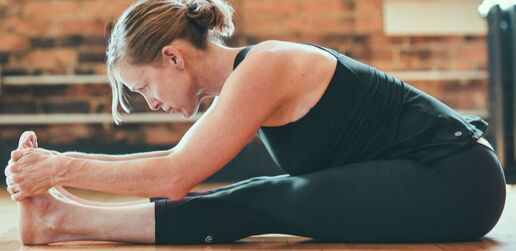

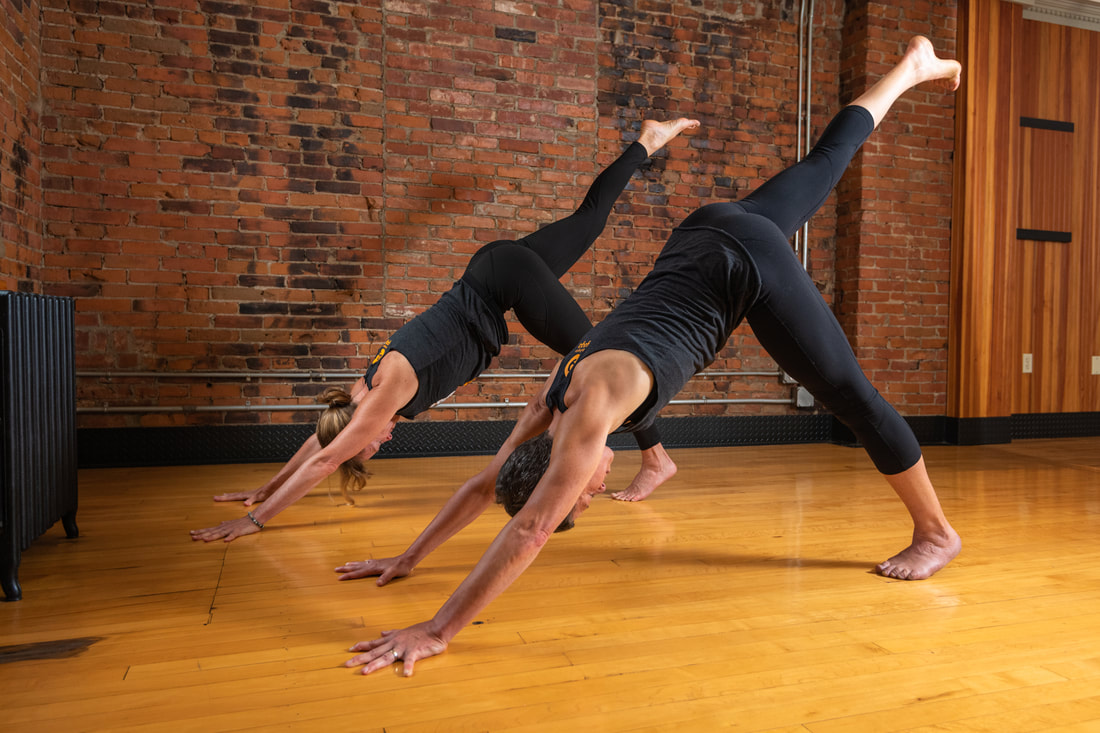
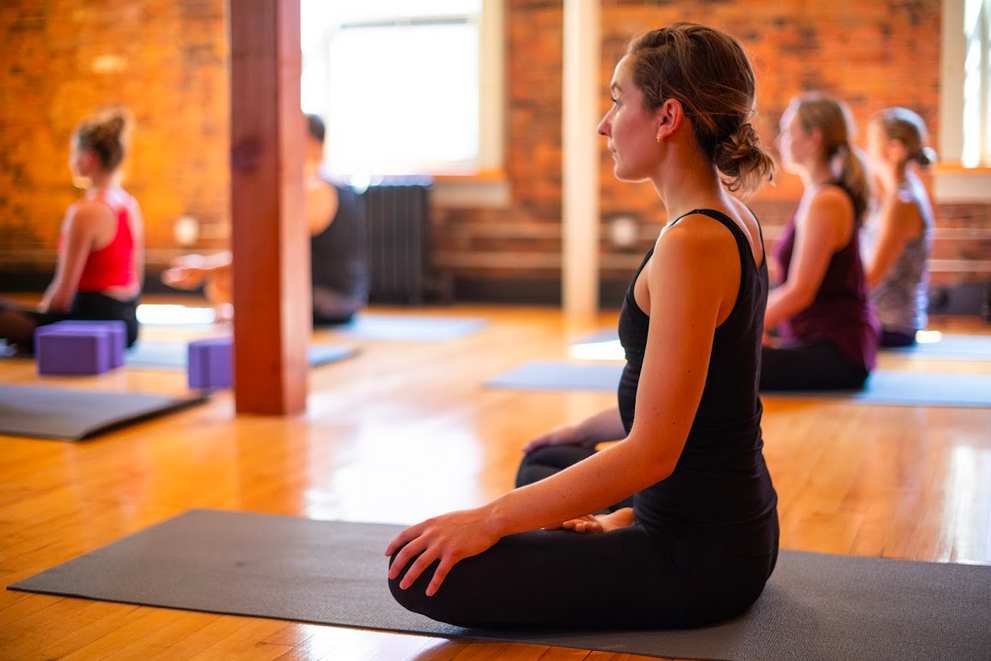
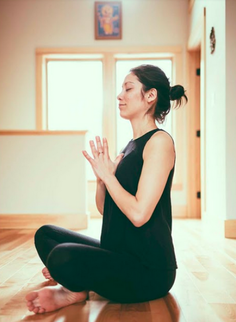
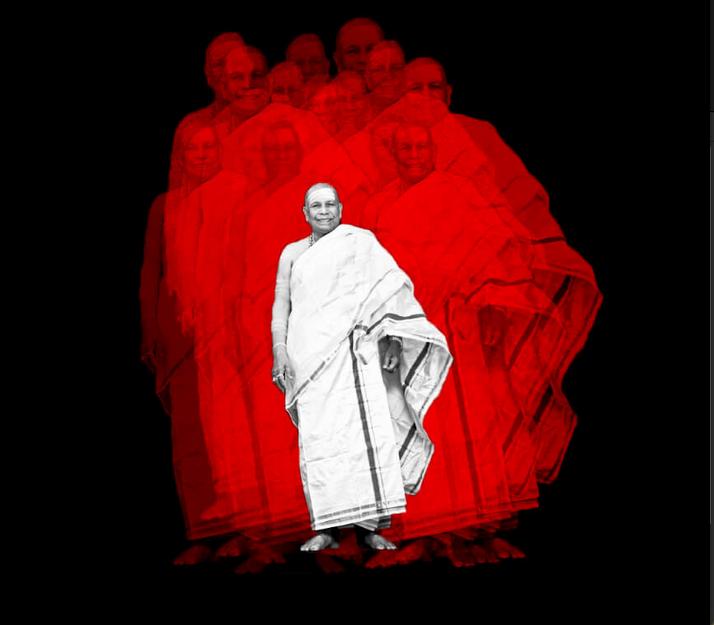
 RSS Feed
RSS Feed
